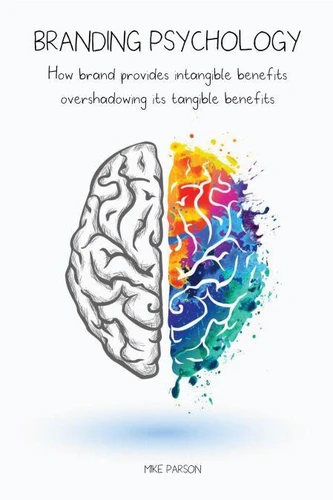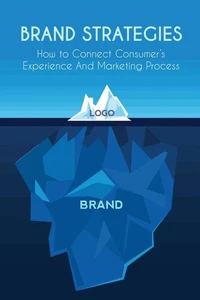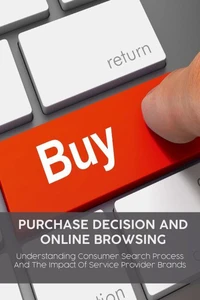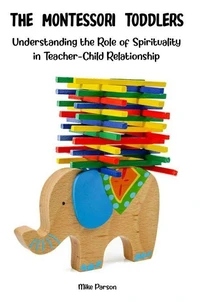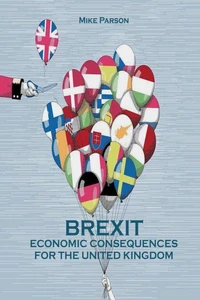Branding Psychology How Brand Provides Intangible Benefits Overshadowing its Tangible Benefits
Par :Formats :
Disponible dans votre compte client Decitre ou Furet du Nord dès validation de votre commande. Le format ePub est :
- Compatible avec une lecture sur My Vivlio (smartphone, tablette, ordinateur)
- Compatible avec une lecture sur liseuses Vivlio
- Pour les liseuses autres que Vivlio, vous devez utiliser le logiciel Adobe Digital Edition. Non compatible avec la lecture sur les liseuses Kindle, Remarkable et Sony
 , qui est-ce ?
, qui est-ce ?Notre partenaire de plateforme de lecture numérique où vous retrouverez l'ensemble de vos ebooks gratuitement
Pour en savoir plus sur nos ebooks, consultez notre aide en ligne ici
- FormatePub
- ISBN8201204488
- EAN9798201204488
- Date de parution07/08/2021
- Protection num.pas de protection
- Infos supplémentairesepub
- ÉditeurJL
Résumé
Numerous studies have shown that people buy feelings and experiences, not things. When you see a cute puppy, certain hormones fill your brain, and you become loving and affectionate. You don't care about the exact hormone process in your brain, but the puppy certainly makes you feel good. There is an intense psychological component to marketing a business or creating a successful brand. In its essence, branding is designing a campaign to induce popularity and loyalty among customers.
To do this, one must understand the audience's psychology, giving you the ability to entice consumers who will mentally connect and relate to your brand's identity. Every individual consumer has an entirely separate and possibly stressful life outside of your market. Busy lives mean that consumers do not have the mental bandwidth to consider every product on the market. To establish a long-lasting relationship, the brand provides intangible benefits that sometimes overshadow the tangible benefits.
It is getting tougher with the explosion of communication technology, where people stay connected to update information. The emergence of branding topics has been witnessed with the blast of branding categories that apply to manufacturing and service industries. The brand is a logo, symbol, name, or design that creates a trademark or signature that distinguishes goods or services. Building a strong provides additional value that looks simple from the customer point of view but a great deal for a firm to survive the stiff competition in the market.
The brand is a critical element to superior quality products, especially to the saturated market; hence, a trusted brand must satisfy customer needs and deliver excellent quality on attributes that matter to customers, low cost of quality, and overall cost leadership, and effective positioning.
To do this, one must understand the audience's psychology, giving you the ability to entice consumers who will mentally connect and relate to your brand's identity. Every individual consumer has an entirely separate and possibly stressful life outside of your market. Busy lives mean that consumers do not have the mental bandwidth to consider every product on the market. To establish a long-lasting relationship, the brand provides intangible benefits that sometimes overshadow the tangible benefits.
It is getting tougher with the explosion of communication technology, where people stay connected to update information. The emergence of branding topics has been witnessed with the blast of branding categories that apply to manufacturing and service industries. The brand is a logo, symbol, name, or design that creates a trademark or signature that distinguishes goods or services. Building a strong provides additional value that looks simple from the customer point of view but a great deal for a firm to survive the stiff competition in the market.
The brand is a critical element to superior quality products, especially to the saturated market; hence, a trusted brand must satisfy customer needs and deliver excellent quality on attributes that matter to customers, low cost of quality, and overall cost leadership, and effective positioning.
Numerous studies have shown that people buy feelings and experiences, not things. When you see a cute puppy, certain hormones fill your brain, and you become loving and affectionate. You don't care about the exact hormone process in your brain, but the puppy certainly makes you feel good. There is an intense psychological component to marketing a business or creating a successful brand. In its essence, branding is designing a campaign to induce popularity and loyalty among customers.
To do this, one must understand the audience's psychology, giving you the ability to entice consumers who will mentally connect and relate to your brand's identity. Every individual consumer has an entirely separate and possibly stressful life outside of your market. Busy lives mean that consumers do not have the mental bandwidth to consider every product on the market. To establish a long-lasting relationship, the brand provides intangible benefits that sometimes overshadow the tangible benefits.
It is getting tougher with the explosion of communication technology, where people stay connected to update information. The emergence of branding topics has been witnessed with the blast of branding categories that apply to manufacturing and service industries. The brand is a logo, symbol, name, or design that creates a trademark or signature that distinguishes goods or services. Building a strong provides additional value that looks simple from the customer point of view but a great deal for a firm to survive the stiff competition in the market.
The brand is a critical element to superior quality products, especially to the saturated market; hence, a trusted brand must satisfy customer needs and deliver excellent quality on attributes that matter to customers, low cost of quality, and overall cost leadership, and effective positioning.
To do this, one must understand the audience's psychology, giving you the ability to entice consumers who will mentally connect and relate to your brand's identity. Every individual consumer has an entirely separate and possibly stressful life outside of your market. Busy lives mean that consumers do not have the mental bandwidth to consider every product on the market. To establish a long-lasting relationship, the brand provides intangible benefits that sometimes overshadow the tangible benefits.
It is getting tougher with the explosion of communication technology, where people stay connected to update information. The emergence of branding topics has been witnessed with the blast of branding categories that apply to manufacturing and service industries. The brand is a logo, symbol, name, or design that creates a trademark or signature that distinguishes goods or services. Building a strong provides additional value that looks simple from the customer point of view but a great deal for a firm to survive the stiff competition in the market.
The brand is a critical element to superior quality products, especially to the saturated market; hence, a trusted brand must satisfy customer needs and deliver excellent quality on attributes that matter to customers, low cost of quality, and overall cost leadership, and effective positioning.

